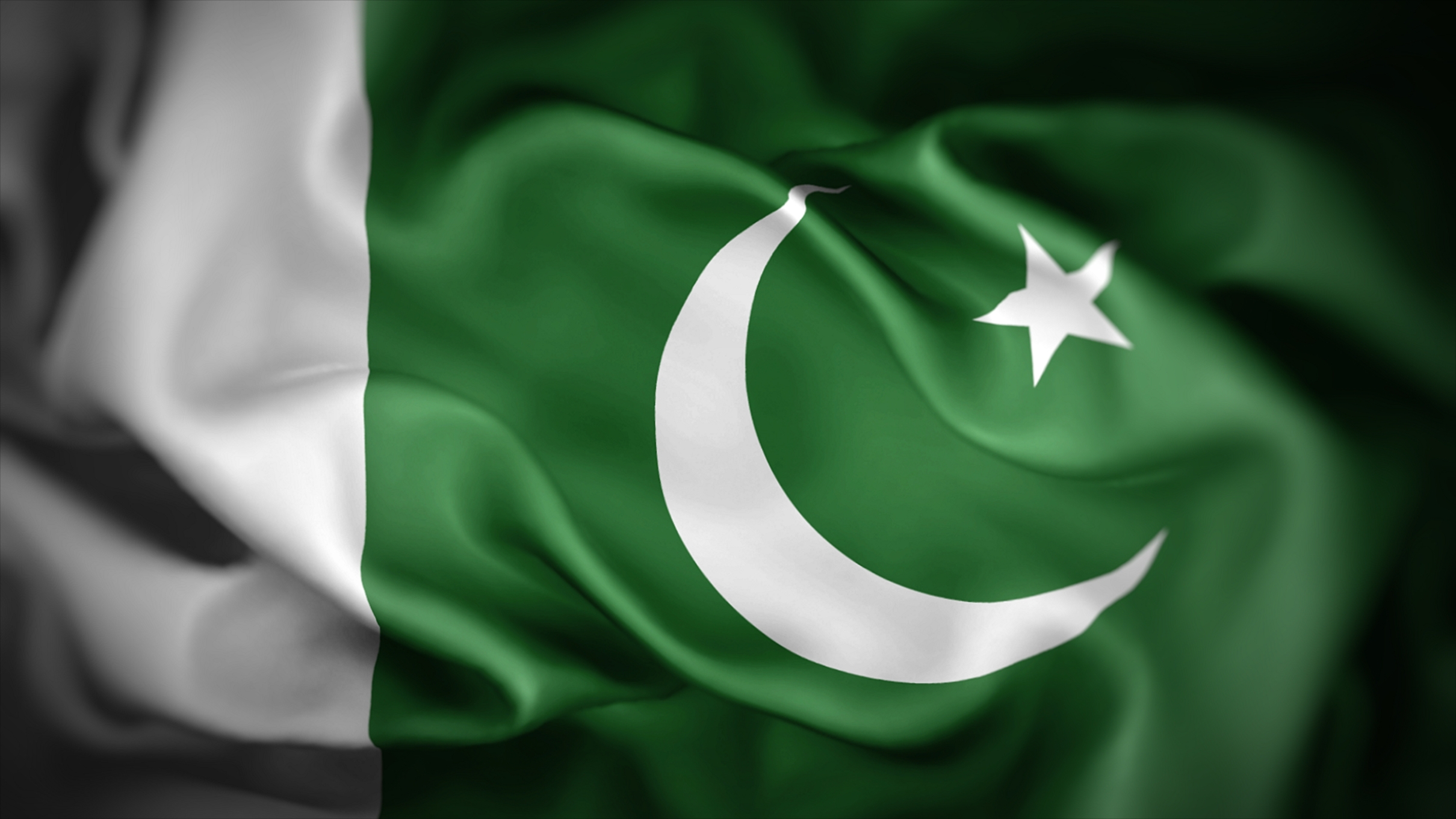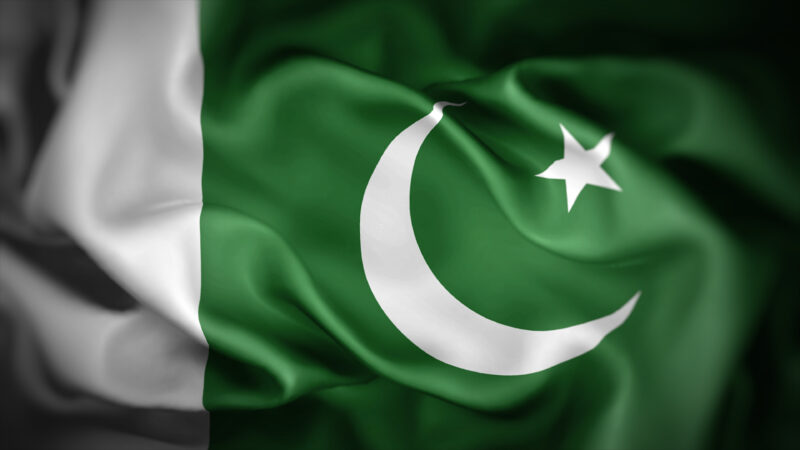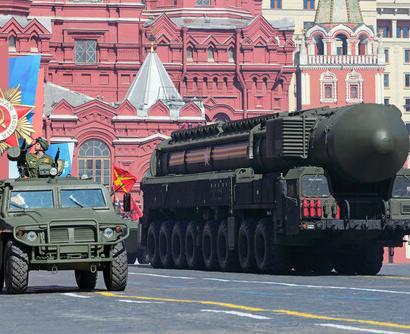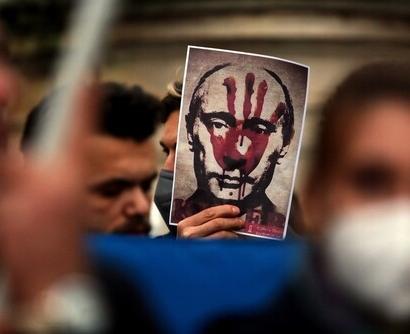Abstract: Inherent instability and permanent chaos in an image of a worn-out rope bridge over a ravine is a defining feature of the state of Pakistan. In recent years, two vital lifelines of the state: foreign aid/loan pipeline and cohesion of military – country’s sole powerful institution – have dwindled and eroded. This unprecedented double blow has sent the country into an economic meltdown and significantly chipped away the writ of the state. With no other institution of the state potent enough to play saviour, the country is plunging into a spiral that at best could be paused but will be hard to stop.
Bottom-line upfront: The state of Pakistan is teetering on the edge of collapse. The worst-case scenario envisages a dysfunctional nuclear state like Afghanistan alongside a dysfunctional Taliban controlled Islamic Emirate of Afghanistan. Broadly speaking, restoring aid/loan lifeline is never going to be a permanent solution.
Problem statement: If the worst-case scenario for Pakistan does materialize, what impact could it have on the region and world? What choices, if any, does the world have to contain/manage the impending disaster and for how long?
So what?: Should we care? Yes. But why and to what extent? No outside help can sustain a falling state, but yes, the world can and it always tried to contain/control/manage the fallout, as seen in the Balkans and several African conflicts. Nevertheless, this one is tricky as the country has a nuclear arsenal and neighbours China, Iran and the Middle East.

Source: www.shutterstock.com/Tatohra
The Most Stable Instability
A widely repeated legend attributed to Mark Twain goes ‘the rumours of my death are greatly exaggerated.’ If applied to nation-states and their fall, this brilliant quip by the American humorist looks like a running commentary on the state of affairs in Pakistan. The country’s fall has been predicted so often that some seasoned academics like Dr Christian Fair call it ‘the most stable instability.’ Many times, obituaries were written, torn, re-written only to be shelved again.[1] So what is different now and what is the point in making yet another prophecy?
To get to this, we need to look into what makes Pakistan so fragile that its demise has been predicted throughout its 74-year existence. Not to mention, it was once proven true when the country broke into two creating Bangladesh in 1971. Much has been written and debated during the last decades about the nation’s faultlines. These are comprised of its lack of democracy, freedoms and plurality, a weak and dependent loan/aid centred economy, almost persistent military rule, lack of independent state institutions, military’s deadly embrace of religious/jihadi militias and refusal to grant political and economic rights to various nationalities that make the federation.
Though all these ever-deepening faultlines ran like a permanent thread of the state fabric, two, possibly three seem capable of creating a spiral that would be hard, if not impossible, to reverse.
Economy
Ever since the inception of Pakistan in 1947, the country’s ruling elite led by military and bureaucracy first pivoted and then adopted the model of seeking rent for its geopolitical space. The country straddles the gateway to central Asia, is situated at the mouth of the strategic Strait of Hormuz in the Persian Gulf. It borders Iran, China and India. So instead of relying on its immense and diverse human resources to build an industrial economic base, it sought a rent-seeking role for its military and territory from the US to meet its growing economic needs and annual budgetary support. It got the role and a seat in the Cold War alliances of SEATO and CENTO, ensuring a steady stream of dollars from the US and international donors/lenders. The ruling military elite of the state saw it not only an economic and budgetary support but also as a kind of insurance against its larger neighbor India. A perpetual confrontation with India served well for the military to ensure that it stayed dominant on the national political scene besides guaranteeing a steadfast partnership with religious extremists. So, Pakistan is not a case of a country’s economy going bust due to various macroeconomic factors. However, it is the classic case of a fall in demand for the real estate that it rented to meet its economic needs. Furthermore, since there is no alternative economic base available and citizens are not used to paying taxes, suddenly, the whole enterprise looks unsustainable.
Pakistan is not a case of a country’s economy going bust due to various macroeconomic factors. It is the classic case of a fall in demand for the real estate that it rented to meet its economic needs.
A few days back, a former Pakistani Finance advisor to the PM and former head of tax collection agency Shabbar Zaidi reported that the nation is technically bankrupt. All major economic indicators can attest to this. The country is tallying extensive fiscal and financial deficit with a ballooning current account deficit and burgeoning loan portfolio that runs is equivalent to 98 per cent of the GDP. If we add the debt servicing needs to the current account deficit, Pakistan would need a whopping 29 billion dollars by July, and external debt sources are drying up. IMF, the current bailout administrator, is asking for some long-overdue structural adjustments in the taxation and allocation system for a $6b loan package. The country just picked up 3 billion dollars at a 4 per cent interest rate from Saudi Arabia to shore up its fast-depleting dollars reserves that stand at a meager $16 billion. The rupee has depreciated 31 per cent in the last few months, and inflation (food and essentials) is at 22 per cent. With the usual loan pipeline from IFIs like World Bank, ADB, Paris Club, IMF and bilateral donors tapering off and exports falling due to energy shortages and the nation’s political orientations, there is no proverbial silver lining on the horizon. Pakistan’s total public debt currently stands at 222 billion dollars, and with a very low tax to GDP ratio, it barely coughs up 55 per cent of its annual budgetary needs, while the rest has to come from external loans and grants pipeline. However, in recent times, IFIs have given very little and bilateral donors like China[2] and Saudis doled out loans[3] on stringent conditions. More than 60 per cent of the country’s budget is consumed by debt servicing and defence expenditures, while the rest goes to non-development expenses, leaving very little for the development and social sector.[4]
Pakistan’s total public debt currently stands at 222 billion dollars, and with a very low tax to GDP ratio, it barely coughs up 55 per cent of its annual budgetary needs, while the rest has to come from external loans and grants pipeline.
Since only a fraction of the population pays direct taxes – just 20 out of 230 million – and with taps of foreign assistance shutting down, it’s hard to see economic survival in the current scenario if the external loan/aid pipeline is not restored. More importantly, it looks like a difficult proposition in the current scenario.
Military, Jihadis and Internal Divisions
Why Pakistan is where it is economically today is a direct consequence of 70-year direct and indirect military rule. In its quest for state dominance, the military refused to allow any civilian institution to establish and grow. In its efforts to capture polity and push back political forces, it forged a permanent alliance with religious forces and used them to seek geopolitical and territorial advantage in the region. To stay dominant in Pakistan, the military discouraged peace with neighbours, especially India, to claim the lion share of the resources. After the Afghan Jihad of the ‘80s and later after 9/11, military saw the two fold benefit of keeping control at home and gaining black economy windfall in promoting Jihad through proxies against India and NATO forces. In the process, the military which used to be a unified force was quickly radicalized through the proxies it handled for tactical gains, and the entire institution started showing signs of divisions and fractions that terribly affected the chain of command. Various power centers gradually emerged within the military over the question of support for Jihadis and Pakistan’s relations with India and the West. Currently, the only institution the state of Pakistan knew controlled all other civilian institutions like parliament and judiciary is in disarray. The authority of the chief and down the chain of command looks suspect at best.[5] The reason for this rapid deterioration is the tremendous influence of former army chiefs and intelligence chiefs like Aslam Beg, Hamid Gul, Ashfaq Kayani, Shuja Pasha, Lt. Gen (ret.) Aziz Lt Gen (ret.) Mahmood and Lt Gen (ret.) Javed Nasir and scores of others through their active role after retirement, they influence a larger portion of armed forces in favour of Pakistan’s Afghan and Kashmir policy and continue to do so.
After the Afghan Jihad of the ‘80s and later after 9/11, military saw the two fold benefit of keeping control at home and gaining black economy windfall in promoting Jihad through proxies against India and NATO forces.
Worst still, partly due to these competing influences and partly due to official dual policies of successive army chiefs, many Pakistani proxies started leaving the orbit and turned against the military itself. Due to lack of cohesion and a chain of command, this is the worst nightmare for Pakistan’s military as groups like TTP and ISIS-K that always got the better of the military and the military rarely took them on in a battlefield, always preferring cash-laced deals.
With TTP, ISIS-K and TLP in urban Punjab challenging the military once again, it would be an uphill task to push them back and stage showdowns when clearly the determination and unity of purpose is missing. Therefore, if the anti-military proxies continue to gain traction and ground, still we would not have a state of Pakistan in its current form or texture, and if the military crumbles under the weight of external pressures and internal divisions, again, we could see a quick disintegration of the state components and structures. Here as well, a breakdown should be braced for, one that does not seemingly have a reset button.
Conclusion
The most important question – what if the state structures crumble – is the repercussions. Pakistan is a unique case study in this regard. Unlike Afghanistan or Somalia, it has, so far, a reasonable central authority, inherited colonial institutions like judiciary and parliament – though dysfunctional and decaying, a functional, though extractive financial system and a vibrant middle class that is well-versed in social media that aspires upward mobility. However, when bankruptcy strikes and national cohesion erodes, once mighty looking states like the Soviet Union cave in like cards.
Scenario One
In a classic case, the erosion of the state’s authority would immediately impact Afghanistan bordering provinces of Balochistan and Khyber Pakhtunkhwa that are already enduring low to medium insurgencies for the last two decades. The insurgents in these areas like TTP and Baloch nationalists could join hands with Jihadis across the border – a situation that would be very hard to contain or control. In the absence of money and central authority, the province of Sindh would also be quick to show serious unrest and centrifugal tendencies as this region never liked or accepted military dominance. This scenario envisages a quick breakdown of authority, making way for local and regional powers and influences.
Scenario Two
The military retreats under the pressure of public outrage and due to worsening economic conditions, unable to sustain military’s system of patronage and perks. Then all parts of Pakistan, including the largest province and military’s power-base Punjab, could see a complete breakdown of the state’s writ leaving chaos and small independent power centres in its wake.
Regional Impact
All regional players and neighbours of Pakistan would have a nightmare at hand. China’s Western ambitions would suffer a great deal as no stability and chaos would mean no CPEC, no BRI, and unless China makes a military push for Gwadar Port, it would be hard for it to sustain any presence at the port. For Iran, the situation would be destabilizing, as Sunni Jihadi militants would be at the borders along with southern Iran. For India, it will be a nightmare of a different kind because chaos right along the long stretch of border could translate into terrorism and narcotics trade. So Delhi would like to ensure a stable Punjab and Kashmir region to mitigate the effects.
Tailpiece
Lately, the country has witnessed a significant development that could have far-reaching implications. Pakistan signed its 13th bailout package with IMF for $6billion. The donor asked for some fundamental structural adjustments in the economy like ensuring autonomy of central bank, abolition of subsidies and meeting revenue targets. As usual, the country faltered, but the Fund refused to release $1billion from the second tranche[6]. This money is a lifeline for the upcoming budget, so the government had no choice but to accede[7]. The bill is in front of parliament. If passed, it has the potential of handing over the central bank a virtual stranglehold on Pakistan’s economy, drastically checking the military’s ability to draw unlimited unaccounted money. The Fund has several leverages that it can use, and the military finds itself in a very tight corner for the first time. If things pan out as they look, the country could see an immediate reduction in the military’s power to draw and dole out unlimited, unaccounted money. The development has the potential of slicing away military’s immense influence on all segments of society that may lead to any one of the scenarios projected in conclusion.
The Fund has several leverages that it can use, and the military finds itself in a very tight corner for the first time.
However, the move may bring short-term macro-economic stability and some measure of political stability, but it is unlikely to bring long-term economic or political stability due to already mentioned factors. This development may usher in easing FATF grey-listing and a reprieve in international financial decisions like easing borrowing from the IFIs.
Lately, perhaps mindful of all of the above, the military looks busy in a last-ditch effort to salvage the situation. A political set-up headed by former prime minister Nawaz Sharif who is in exile in London is being looked into so as to:
- reset Pakistan’s relations with India and the West that could potentially restore the aid/loan pipeline and open up the shrinking export markets;
- to avoid direct confrontation and reprisals by the Pakistani public who have now begun to regard the military as responsible for all extremism and economic woes; and
- if nothing works and the state structure collapses anyway – under the weight of economy and rampant Jihadi militancy inside the military and outside – to shift blame to Nawaz-led civilian leadership for a collapse.
How far this latest attempt by the military to seek civilian cover when chips are down can go is anybody’s guess.
Mohammed Rizwan is a freelance writer and researcher based in Toronto. He is a former journalist and fellow at The Pragmora Institute. The views contained in this article are the author’s alone.
[1] Christine Fair, “Pakistan: An Unwelcome But Resilient Pest,” Live Hangout, August 08, 2020, https://www.youtube.com/watch?v=zqDpE1V5eFU.
[2] Faseeh Mangi, “Saudi Arabia Pledges $4.2 Billion to Support Pakistan’s Economy,” Bloomberg, Economy, October 27, 2021,https://www.bloomberg.com/news/articles/2021-10-27/saudi-arabia-pledges-4-2-billion-to-support-pakistan-s-economy.
[3] Dipanjan Roy Chaudhury, “China reluctant to lend $6 bn for Pakistan infra project,” Economic Times, May 10, 2021, https://economictimes.indiatimes.com/news/international/world-news/china-reluctant-to-lend-6-bn-for-pakistan-infra-project/articleshow/82513333.cms?from=mdr.
[4] Shahid Javed Burki, “Pakistan’s Economic Difficulties and Their Consequences,” The Wilson Center, https://www.wilsoncenter.org/event/pakistans-economic-difficulties-and-their-consequences.
[5] Alexander Cornwell, “Afghanistan hurtling towards collapse, Sweden and Pakistan say,” Reuters, Asia Pacific, October 23, 2021, last accessed December 29, 2021, https://www.reuters.com/world/asia-pacific/afghanistan-heading-towards-collapse-faster-than-expected-swedish-minister-warns-2021-10-23/.
[6] Munir Ahmed, “IMF deal with Pakistan would revive $6 billion bailout,” AP News, last accessed January 07, 2022, https://apnews.com/article/business-pakistan-international-monetary-fund-11fbc322f9f9460cd1bde3016e896b74.
[7] Shahbaz Rana, “PM Office shares concern on SBP bill,” The Tribute, January 02, 2022, last accessed January 07, 2022, https://tribune.com.pk/story/2336766/pm-office-shares-concerns-on-sbp-bill.






